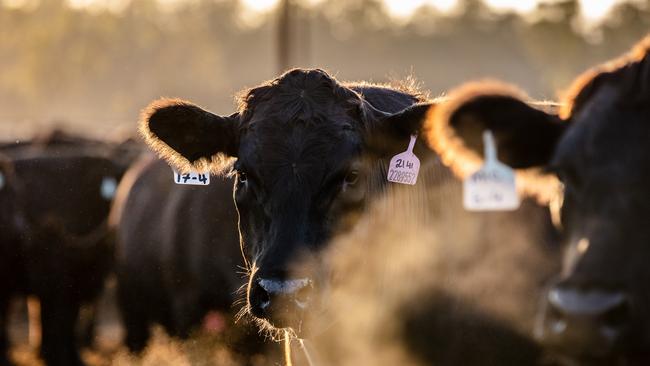Australia’s beef production increasingly relies on feedlots
Australia’s cattle sector was once dominated by grass finishers but the power shift to feedlots shows no sign of stopping. Here’s why.
Australia’s beef herd is no longer all about kings in grass castles.
It's the lot feeders who are now taking the lion’s share of the nation’s cattle production.
The makeup of Australian beef on consumer’s plates has been influenced by two big trends in the past year – heftier carcasses and more cattle than ever finished on grain.
The past quarter to December has shown record male carcass weight, with proportionally more steers being processed than heifers and cows as producers seek to rebuild herds – and grain-fed beef production has also hit 54.5 per cent of total Australian beef production – the largest proportion ever.
According to the industry, the driver is the demand for consistent, high quality product to suppliers.
The number of cattle in feedlots has also hit a new high, with 1,453,580 on feed; mostly driven by growth in NSW.
Most states recorded an increase, but Victoria was an outlier, with a decrease in cattle numbers on feed of almost 10 per cent to 55,326.
According to Meat and Livestock Australia data, there have now been 16 consecutive quarters where Australia held more than one million cattle on feed.

The increased proportion of cattle being slaughtered coming from feedlots has also led to new male carcass weight records. This coincided with record over-the-hooks prices, averaged 723c/kg for the December quarter – exceeding 700c/kg for the first time.
MLA market information manager Stephen Bignell said the high prices were a good incentive to take cattle to heavier weights.
This comes as retail prices also rise, and consumption of red meat falls, per capita, in Australia.
The heaviest cattle came from Tasmania and Queensland, exceeded 350kg/head at 352kg and 353.3kg respectively.
Nationally male carcass weights averaged 343.1kg while national female carcass weights were 279.7kg/head – not as high as the 280.6kg recorded in the first quarter of 2021.
Australian Lot Feeders’ Association president Barb Madden said the figures were an exciting milestone. While reflective of current trading conditions, they also showed the ability of feedlots to “consistently meet the demand from domestic and international markets for quality grain fed beef”, she said.
Thomas Elder Markets analyst Matt Dalgleish said swing towards grain-finishing was faster than he had anticipated. “We do see it ebb and flow through the seasons, but the trend line has been increasing in the past two decades,” he said.
Mr Dalgleish said exporters with contracts to supply customers wanted surety that they could deliver premium products, and feedlotting, although it was still impacted by climatic impacts on prices, was not as variable as grass-finishing.
Feedlotting gave exporters more control over production systems.
However, he said, Australia was likely to somewhat rebuild its grass finishing capacity as the herd rebuilt.
He said there was a risk that Australia’s processing sector – which had been under difficult trading conditions – could consolidate further. “It is worth keeping an eye on that consolidation element,” he said.
Producers in the US, which has a beef sector where grain-finishing dominates, have recently complained about squeezed margins and meat packer consolidation.





